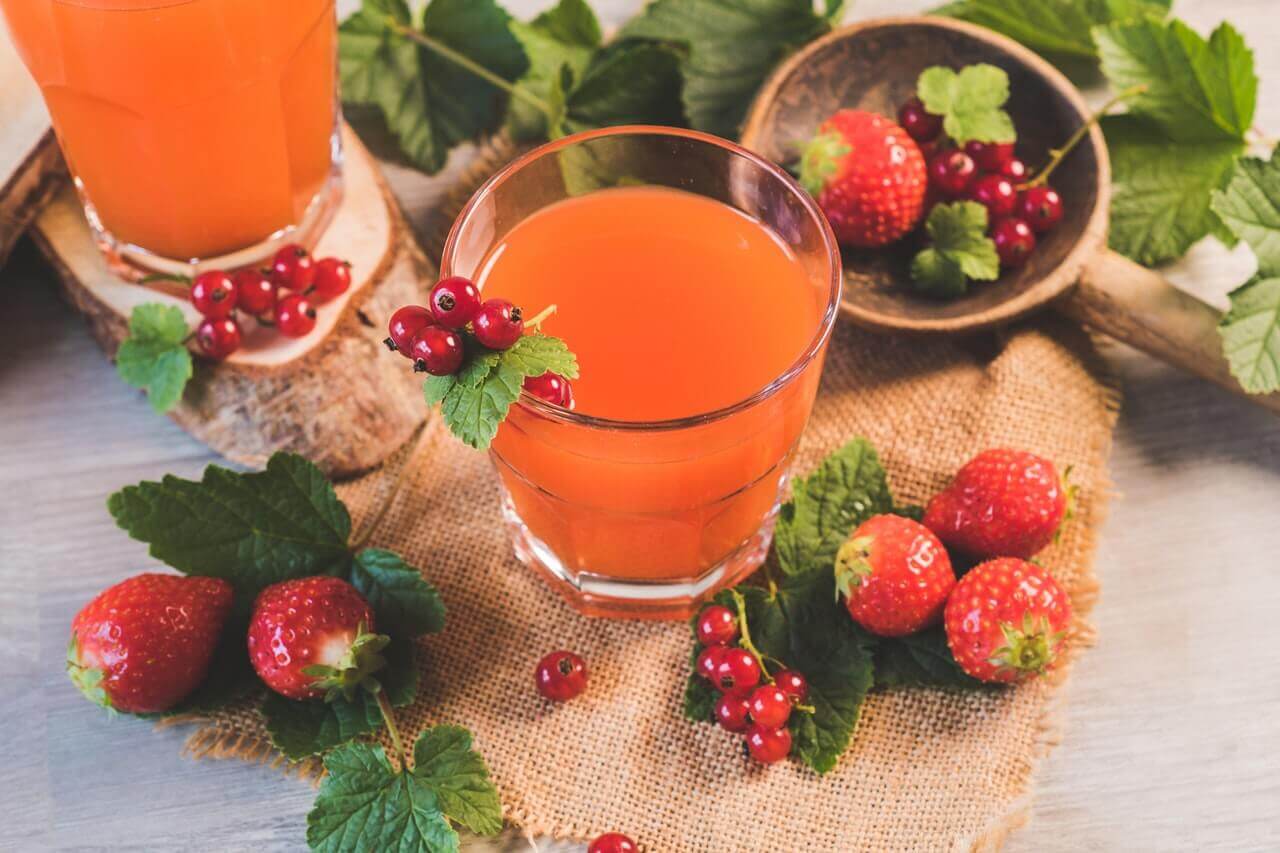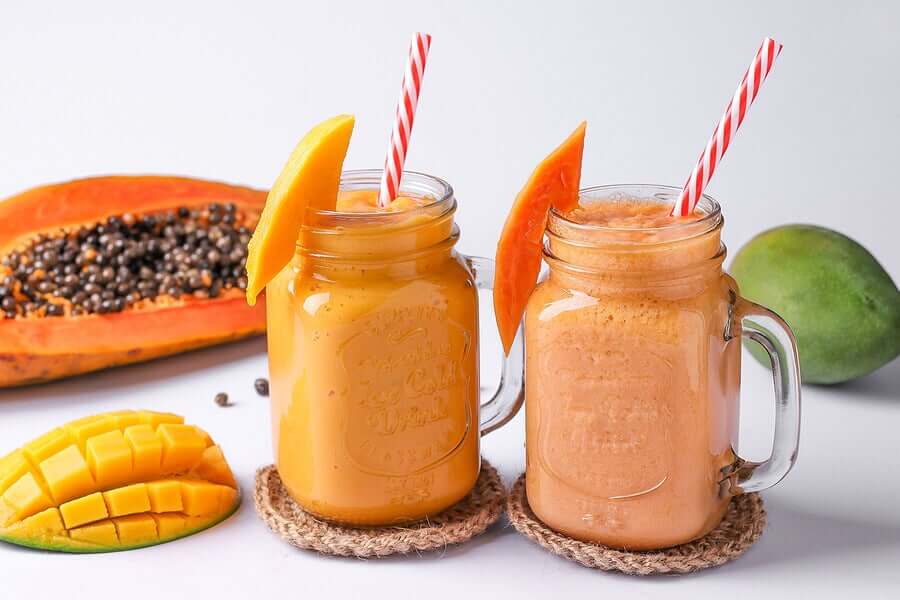Foods that Reduce Stretch Marks


Reviewed and approved by the doctor Karla Henríquez
Stretch marks are skin atrophies that appear when the skin loses elasticity and the fibers break. In other words, when there’s a breakage and partial loss of collagen and elastin fibers. Among the main risk factors that may influence their appearance, we can mention drastic weight gain and loss, followed by pregnancy, hormonal alterations, obesity, among others. The good thing is that, although they’re unsightly, they don’t pose a health risk.
They can appear in various parts of the body, although it’s true that it’s common to find them in the abdominal area and legs. They generally have a pearly appearance, although they can also have a purplish or pinkish hue, according to pharmacist Ana Ayala.
Although there are several types of treatment that can greatly help to mitigate their appearance, it’s important to be clear that there’s no way to eliminate them completely.
Dermatology experts clarify that “at present, there’s no standardized treatment for this disorder and its management is a challenge”. Therefore, all treatments must be combined with good lifestyle habits so that patients can see a real improvement.

Are there foods that reduce stretch marks?
A good diet’s essential to maintaining the health of the skin and the rest of the body. So much so that nowadays, nutricosmetics are used as an ally when it comes to complementing any dermatological treatment.
Eating healthy helps prevent and mitigate the appearance of stretch marks because it allows you to maintain a stable weight, within the normal range, and thus prevent the stretching of the skin.
Here are some of the foods you should include in your diet to keep your skin healthy and beautiful, and keep stretch marks at bay. Keep in mind that none of them will prevent or eliminate stretch marks by themselves, but by helping you to take care of your diet, they help you to gain in health, beauty, and wellness.
1. Wheat germ and whole grains
According to the experts of the Argentine Nutrition Society (SAN), wheat germ’s a food that not only contains vegetable proteins and fiber, but also polyunsaturated fats with a predominance of linoleic acid. “At the same time, it supplies B complex vitamins, such as folate, thiamine, vitamin B6, and minerals such as zinc, selenium, potassium, non-heme iron, and low sodium content”.
Whole grains are also be recommended for the diet, since they contain several essential nutrients and, in addition, help maintain intestinal transit.
2. Fruits and vegetables
The World Health Organization recommends consuming about 400 grams of fruits and vegetables per day to balance the diet and maintain health. These foods are rich in various nutrients and also satiate the appetite without providing too many calories..
Learn more: 5 Wonderful Cruciferous Vegetables for Weight Loss
3. Seeds
Seeds are a source of vitamin E and other nutrients that contribute to the health of the whole organism and also improve the health of all organs, tissues, and body systems. Among the most recommended are chia, flax, sesame, sesame ,and sunflower seeds.
4. Nuts
Nuts provide vitamin E and omega-3 fatty acids that nourish the skin and improve its elasticity. You can consume a handful of walnuts, almonds, hazelnuts, unsalted peanut,s and pine nuts regularly to maintain the beauty of your skin.
5. Vegetable oils
Vegetable oils will provide unsaturated fatty acids and vitamin E. Together, these two ingredients reduce the action of free radicals, among other things.
6. Another great ally: Water
Although water isn’t exactly a food, it’s an essential part of any healthy diet. This vital liquid can contribute a lot to the body, helping it to perform its functions properly and to stay healthy.
Recipes to reduce stretch marks

Fresh strawberry and orange juice
Delicious, refreshing, and digestive, this juice will give you extra antioxidants and essential vitamins for your skin.
Ingredients
- 1 cup strawberries (150 g)
- 2 teaspoons flaxseed (10 g)
- 1 glass of orange juice (250 ml)
- 1 teaspoon of ground oatmeal (10 g)
Preparation
- First of all, wash the strawberries well and put them in the blender cup together with the rest of the ingredients.
- Finally, process until smooth and enjoy.
Juice with spirulina and almond milk
The mixture of spirulina, almond milk, and a touch of aloe vera can help you fight constipation, detoxify, and improve the health of your skin.
Ingredients
- Spirulina (to taste)
- Oat flakes (to taste)
- 1 glass of aloe juice (250 ml)
- ½ glass of almond milk (125 ml)
Preparation
- Process all ingredients until a homogeneous mixture is obtained
- Serve and enjoy
Papaya smoothie

Since papaya’s a food that has anti-inflammatory and digestive properties, this smoothie’s considered beneficial for alleviating fluid retention and regulate intestinal transit.
Ingredients
- 3 teaspoon oatmeal (10 g)
- 3.5 ounces papaya (100 g)
- 2 almonds (to decorate)
- 1 teaspoon of rice molasses (20 g)
- 1 glass of almond drink (250 ml)
Preparation
- First, add all the ingredients in the blender.
- Finally, once they’re well blended, pour into a glass and drink.
The best treatment is prevention
A study published in 2000 clarified that “neither pharmacological more dermocosmetic treatments are very effective in the elimination of atrophic stretch marks, so the best thing to do is to prevent them”.
At the same time, Mayo Clinic experts explain that no treatment eliminates stretch marks. They can only attenuate them. In addition, depending on the case, the doctor may consider using retinoids, light and laser treatments, and microdermabrasion.
All cited sources were thoroughly reviewed by our team to ensure their quality, reliability, currency, and validity. The bibliography of this article was considered reliable and of academic or scientific accuracy.
- Aune D, Giovannucci E, Boffetta P, Fadnes LT, Keum N, Norat T, Greenwood DC, Riboli E, Vatten LJ, Tonstad S. Fruit and vegetable intake and the risk of cardiovascular disease, total cancer and all-cause mortality-a systematic review and dose-response meta-analysis of prospective studies. Int J Epidemiol. 2017 Jun 1;46(3):1029-1056. doi: 10.1093/ije/dyw319. PMID: 28338764; PMCID: PMC5837313.
- Ishihara T, Yoshida M, Arita M. Omega-3 fatty acid-derived mediators that control inflammation and tissue homeostasis. Int Immunol. 2019 Aug 23;31(9):559-567. doi: 10.1093/intimm/dxz001. PMID: 30772915.
- Miyazawa T, Burdeos GC, Itaya M, Nakagawa K, Miyazawa T. Vitamin E: Regulatory Redox Interactions. IUBMB Life. 2019 Apr;71(4):430-441. doi: 10.1002/iub.2008. Epub 2019 Jan 25. PMID: 30681767.
- Ayala A., Las estrías. Etiología, clínica y tratamiento. Farmacéutica, 2000.
This text is provided for informational purposes only and does not replace consultation with a professional. If in doubt, consult your specialist.








